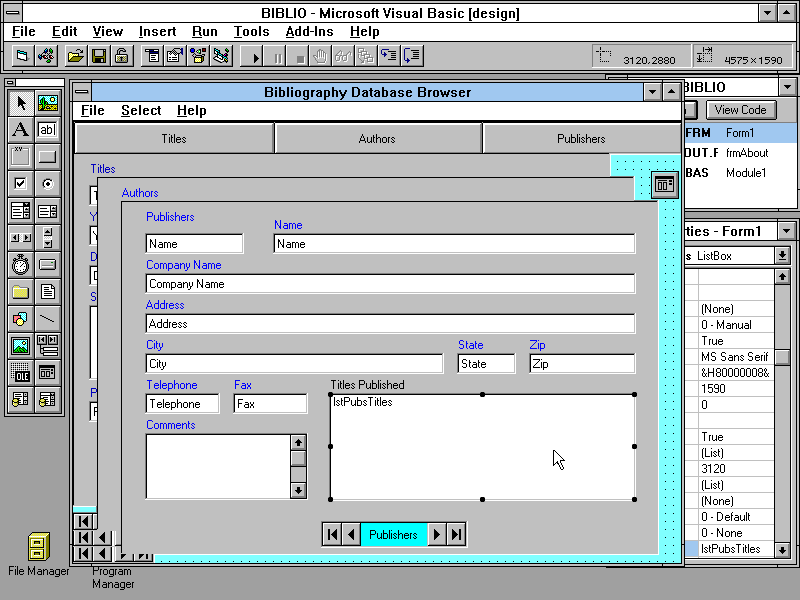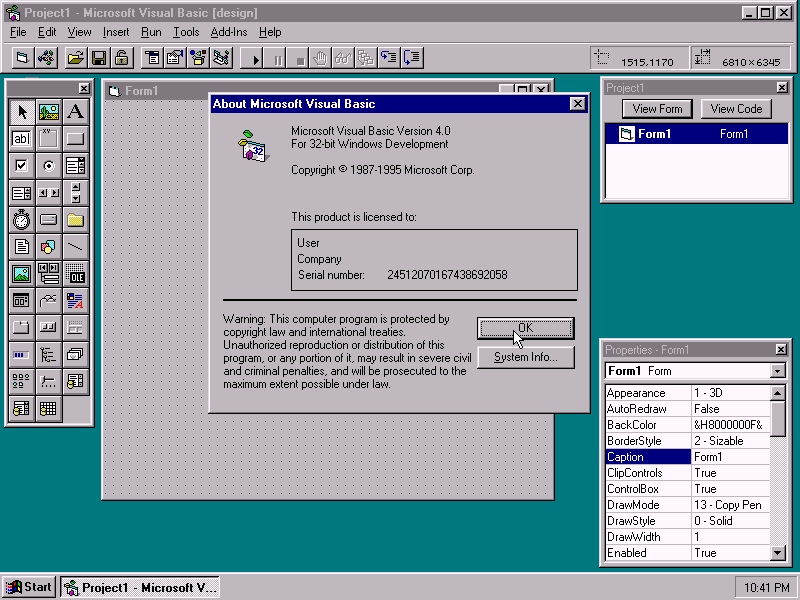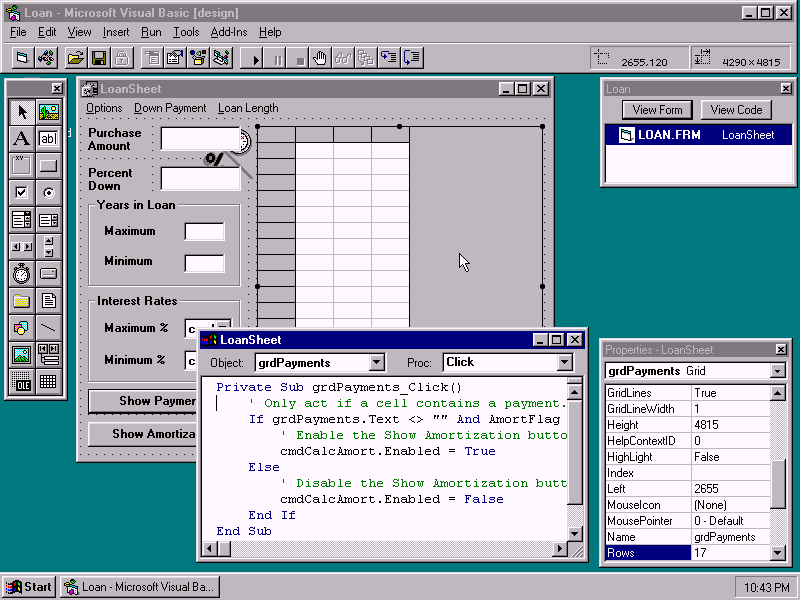Microsoft Visual Basic 4.0
First released in 1991, Microsoft Visual Basic was a programming environment where one could build an application by visually creating the user interface first, and then adding code. In contrast, even the smallest Visual Basic basic programs could take reams of program code to write in C or C++. Visual Basic was extremely popular for business application programming. The language itself was an interpreted BASIC dialect, however speed was maintained through the use of reusable compiled libraries (DLLs and VBX controls). These however, limited application development to Microsoft Windows.
Visual Basic easily interfaced with many database products (most notably Microsoft Access) and reporting tools (most notably Crystal Reports)
Visual Basic 3 was the most popular version under 16-bit Windows 3.1, while Visual Basic 6 was the most popular for 32-bit Windows 95/NT and later. After version 6, Visual Basic was replaced by Visual Basic .NET, an incompatible successor.
Wanted: Manual scans
Screenshots
Release notes
Visual Basic 4.0 was the first version that could create 32-bit executables for Windows NT and 95. It can also still create 16-bit executables for Windows 3.1, however it integrates a new OLE based runtime that is much larger, memory consuming, and slower than VB 3.0.
Installation instructions
This was distributed on DMF formatted (1.7 MB) floppy disks. You will need a utility, such as Winimage, that can write these formats or extract files from them.
Downloads
| Download name | Version | Language | Architecture | File size | Downloads |
|---|---|---|---|---|---|
|
|
4.0 Enterprise | English |
|
28.11MB | 5 |
|
|
4.0 Professional | English |
|
192.51MB | 7 |
|
|
4.0 Working Model | English |
|
10.7MB | 1 |



